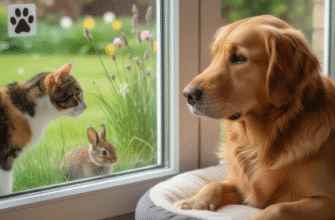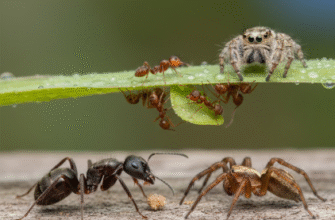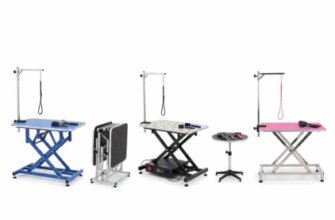Giving your indoor cat a taste of the great outdoors without the associated risks is a dream for many feline guardians. We know cats often gaze longingly out windows, chattering at birds or tracking squirrels. An outdoor cat enclosure, popularly known as a catio, offers the perfect solution. It’s a secured space, typically attached to a house or freestanding in a yard, that allows cats to experience the sights, sounds, and smells of nature safely.
Building your own catio can be a rewarding project, providing a custom-designed haven for your furry friend while potentially saving costs compared to pre-fabricated options. It allows you to tailor the size, features, and placement precisely to your cat’s preferences and your home’s layout. From simple window boxes to elaborate porch conversions, the possibilities are vast.
Why Build a Catio? The Benefits are Clear
The primary advantage of a catio is safety. The dangers lurking outdoors for free-roaming cats are numerous: traffic accidents, predators like coyotes or dogs, territorial fights with other cats, exposure to diseases (like FIV or FeLV) and parasites, and the risk of getting lost or stolen. A catio eliminates these threats entirely, providing peace of mind for owners.
Beyond physical safety, catios offer significant enrichment:
- Mental Stimulation: The outdoor environment is rich with stimuli – birds flying past, insects buzzing, leaves rustling, neighbours walking by. This constant stream of new sights, sounds, and smells prevents boredom and keeps a cat’s mind active.
- Physical Exercise: While not a substitute for indoor playtime, a catio encourages movement. Cats can climb shelves, patrol the perimeter, stretch in the sun, and engage in natural behaviours like stalking imaginary prey (or real insects!).
- Fresh Air and Sunshine: Just like humans, cats benefit from fresh air and the warmth of the sun. Catios provide a safe space for sunbathing (important for regulating body temperature and general well-being) and enjoying breezes.
- Protecting Wildlife: Domestic cats are natural hunters. Even well-fed cats may hunt birds and small mammals. Catios allow cats to enjoy the outdoors without posing a threat to local wildlife populations.
- Reduced Indoor Stress Behaviours: Boredom and lack of stimulation can lead to unwanted behaviours like excessive scratching, over-grooming, or aggression. A catio provides a positive outlet for a cat’s energy and curiosity.
Planning Your Purrfect DIY Catio Project
Before you grab your hammer and wire cutters, careful planning is essential for a successful DIY catio build. Rushing into construction without a clear plan can lead to frustration, wasted materials, and potentially an unsafe structure for your cat.
Choosing the Location
Where will your catio live? Consider these options:
- Window Catio: A small box attached outside a window, often suitable for apartments or homes with limited space. Requires a secure window access point.
- Porch/Patio Conversion: Screening in an existing porch or patio can be a relatively straightforward way to create a large, functional catio.
- Balcony Enclosure: Similar to porch conversions, balconies can be secured with netting or wire mesh. Ensure landlord or HOA approval if applicable.
- Freestanding Catio: Built anywhere in the yard, often connected to the house via a secure tunnel or requiring the cat to be carried out. Offers flexibility in size and design.
Size and Design Considerations
How big should it be? Even a small space is better than none, but larger catios allow for more enrichment. Consider how many cats will use it. Think vertically! Cats love to climb and perch high up, so incorporate shelves, ramps, and multi-level platforms to maximize usable space, even in smaller footprints. Sketch out a basic design, considering the shape, roof style (sloped for rain runoff?), and door placement (for human access/cleaning).
Materials and Tools
Common materials include:
- Framing: Untreated lumber (like cedar or redwood, which are naturally rot-resistant) or pressure-treated wood (ensure it’s safe for pets once fully cured and sealed/painted). Metal framing is another option.
- Wire Mesh: Choose strong, galvanized wire mesh. Vinyl-coated wire is often recommended as it’s smoother and lasts longer. The mesh openings should be small enough that a cat cannot squeeze through and predators cannot reach in (typically 2×2 inches or 1×2 inches is suitable, but 1×1 inch is even safer against smaller predators or kittens). Avoid chicken wire, as it’s too flimsy.
- Roofing: Clear polycarbonate panels, corrugated metal, shingles, or sturdy wire mesh can be used. A solid roof provides shade and weather protection.
- Fasteners: Use exterior-grade screws and heavy-duty staples or washers/screws for attaching the mesh securely.
- Access Point: A pet door designed for walls, doors, or windows.
Crucial Safety Check: Wire Mesh Security. Ensure the wire mesh you select is strong enough to withstand a determined cat or potential predator. Use heavy-duty staples or screws with washers every few inches to attach the mesh securely to the frame. Regularly inspect the mesh and fastenings for any signs of damage, rust, or loose points where a cat could escape or get injured. Gaps between the frame and mesh must be eliminated.
Budget and Permits
DIY catios can range from under a hundred dollars for a simple window box to several thousand for a large, elaborate structure. Price out your materials beforehand. Importantly, check local zoning laws and Homeowners Association (HOA) rules – some areas may have restrictions on outdoor structures, even for pets.
Building Basics: From Frame to Finish
While specific plans vary greatly, the general construction process follows these steps:
- Build the Frame: Construct the floor, walls, and roof supports according to your design. Ensure everything is square and level. If attaching to the house, plan how it will connect securely.
- Attach the Wire Mesh: This is a critical step for safety. Cut the mesh carefully (wear gloves!). Stretch it taut across the frames (inside or outside, inside often prevents cats climbing the frame itself) and fasten securely every few inches. Overlap seams generously where pieces meet.
- Install Roofing: If your design includes a solid roof, install it now, ensuring it’s weatherproof and slopes correctly for drainage if necessary.
- Create Access: Install the cat door in the chosen window, wall, or door leading into the catio. Ensure it’s sealed properly against weather and drafts.
- Secure the Structure: Firmly attach the catio to the house wall, window frame, or ensure a freestanding unit is stable and won’t tip over (consider ground anchors).
- Add Enrichment Features: Install shelves, ramps, perches, and scratching posts inside the catio. Sand any rough edges on wood.
- Final Safety Inspection: Meticulously check every inch of the catio for sharp edges (staple ends, wire points), gaps (especially near the house connection and door), loose mesh, or unstable shelves. Ensure any wood treatments used are non-toxic and fully cured.
Enriching Your Cat’s Outdoor Haven
A basic structure provides safety, but enrichment makes a catio truly engaging. Think like a cat!
- Go Vertical: Install shelves at various heights, connected by ramps or spaced for jumping. A high perch is often a favorite spot for surveying territory.
- Comfort Zones: Add comfy, weather-resistant beds or cushions in sunny and shady spots.
- Scratching Opportunities: Attach sisal rope-wrapped posts or cedar planks for scratching.
- Nature Inside: Include pots with cat-safe plants like catnip, cat grass, spider plants, or valerian. Always double-check plant toxicity before introducing them.
- Water Station: Provide a source of fresh water, especially on warm days. A pet fountain can be appealing.
- Toys: Occasionally add stimulating toys, but remember the outdoor environment itself is the main attraction.
Ongoing Maintenance
Your catio will require some upkeep. Regularly sweep or vacuum the floor, clean any bedding, check the structure’s integrity (especially after storms), inspect the mesh and fastenings, and ensure the cat door functions correctly. Addressing minor issues promptly prevents them from becoming major safety concerns.
Building a DIY catio is more than just a construction project; it’s an investment in your cat’s happiness and well-being. By providing safe access to the stimulating outdoor world, you enrich their lives immeasurably, strengthening the bond you share. With careful planning and attention to safety, you can create a secure slice of paradise your feline friend will adore for years to come.








